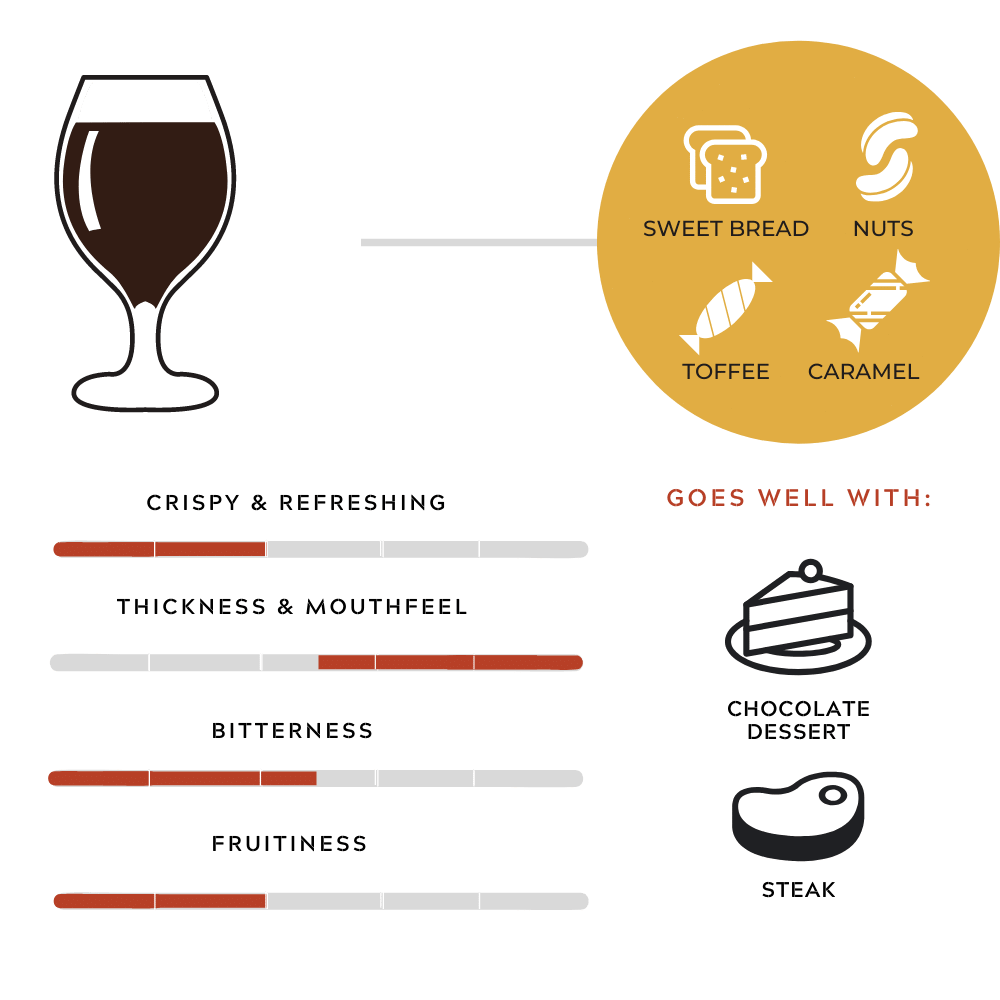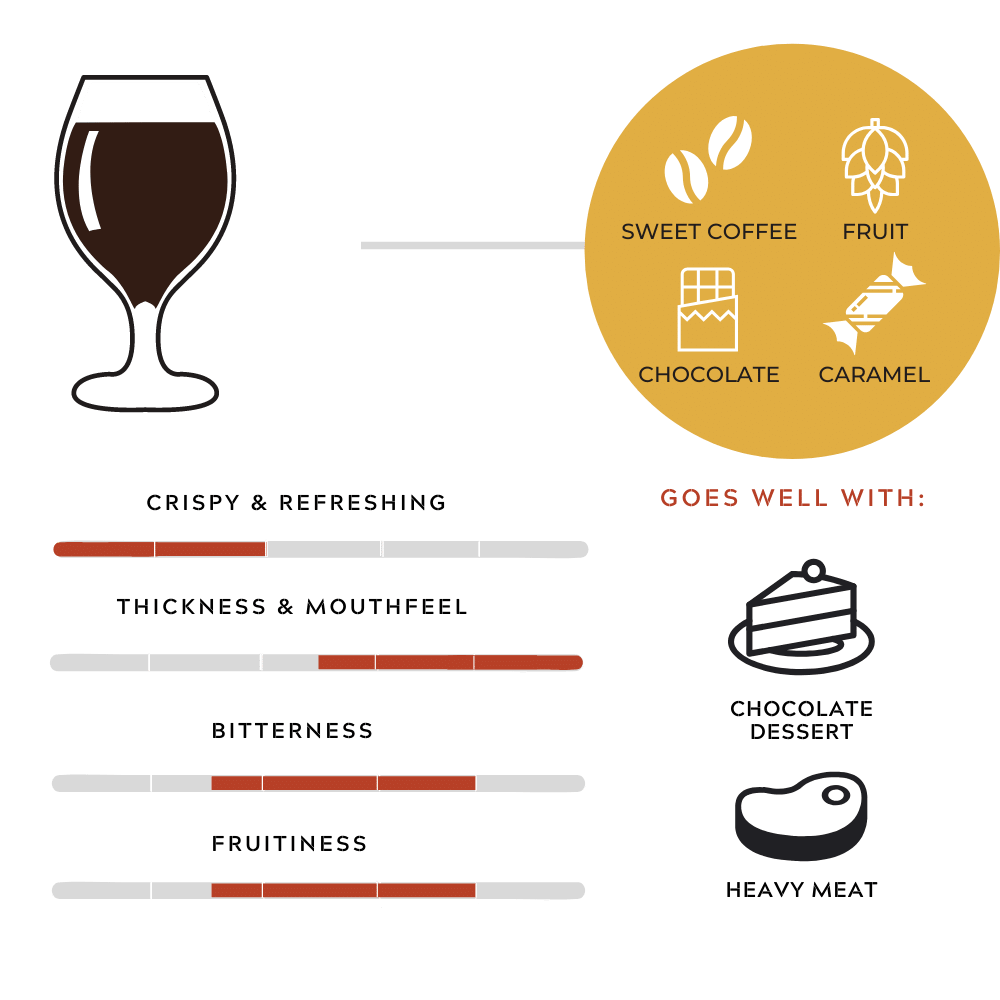Porter ales, or “porters” as they’re more commonly referred to as, represent a step in the darker direction for the ale category, with most examples of these beers being almost as dark brown to black as the more famous stout ale.
Whilst stouts might get more attention thanks to massive brands such as Guinness, porters were actually the precursor style to exist, with porters today now coming in a variety of specific flavours, colours, and general characteristics.
For comparison, you can often expect porters to contain lesser amounts of burnt coffee or bitter roast flavours as the presence of heavily roasted malted barley is often kept to a minimum.
Instead, these beers are often sweeter in character than stouts, with common flavours including toffee, caramel, sweet chocolate, and nuts, all in a creamy and silky textured brew.
In addition to these flavours, most porters are medium to heavy bodied in their character, slight to moderate in their amounts of carbonation, and low to moderate in their overall hop profile.
When exploring this style of ale, the sub-styles that are most important to consider are:
This article offers further insights into porter ales for those who want to explore, in greater depth, the general attributes of the style beyond this quick guide.
English-stye brown porters are famous for their malty sweet flavour profile that often contains undetectable amounts of hoppy fruitiness.
What sets this sub-style apart, particularly against the stout category, is its typical lack or low use of heavily roasted malted barley, resulting in beers with far less burnt coffee or dark roast flavour.
Instead, many of these medium to heavy bodied beers are renowned for their silky, mouthcoating texture that imparts flavours of caramel, toffee, sweet bread, and nuts.
As mentioned, hop flavours are kept to a minimum in this sub-style, although hoppy bitterness can sometimes be perceived as low to moderate in its strength.
With carbonation usually taking a back seat, English-style brown porters are best matched with fuller flavoured and richly sauced meat dishes, including barbecued ribs or cuts of juicy steak, roast vegetables, and finally, chocolate desserts.
As the name suggests, robust and smoke porters are often brewed to be far more intense in their overall flavour profile and general characteristics than standard porters.
Malty sweet flavours of caramel, chocolate, and sweet coffee are often featured alongside stronger flavours of dark chocolate and black bitter malt, although black coffee and roasted barley flavours are still not as overly prominent as they are in many stouts.
The hop profile gets a boost too, with most robust porters possessing a moderate amount of hoppy bitterness and low to moderate amount of hoppy fruit flavour.
Smoke porters, as an added extra, take a standard robust porter as a base and include wood smoked malted grains in their malt bill, imparting smoky flavours into the final brew.
Because both of these beers are famously medium to full bodied and silky and mouthcoating in their texture, with carbonation usually being kept to a minimum, they pair sublimely with heavily roasted or glazed meats, and creamy chocolate-based desserts.
Though not credited for having invented the porter, American brewers have taken the standard English-style brown porter and run off with it to craft brews with characteristically greater amounts of hop flavour and bitterness, and even greater depths of malty sweetness.
With that being said, the malt profile is typically moderate to intense, with common flavours often including sweet chocolate and caramel, and the overall hop profile is often quite moderate, with medium amounts of hoppy bitterness and hoppy fruit flavours being noticeable.
Similar to other sub-styles of porter, American porters are medium to full bodied in their character and often incredibly silky smooth and mouthcoating in their texture, making them highly appropriate when paired with heavy meat dishes and creamy chocolate-based desserts.
If you’ve been following beer trends recently you would know that Hazy IPAs are all the new craze. Here, we explore what they are & how they taste & pair with food.
Interested in exploring craft beer but not sure where to begin? In this guide, we examine some of the best styles to start with for those looking for some quick guidance.
Beer cocktails? Far from being a far-flung notion, using beer to create exquisite cocktails is strongly advocated for by bartenders the world over. Here, we explore some of the best.



